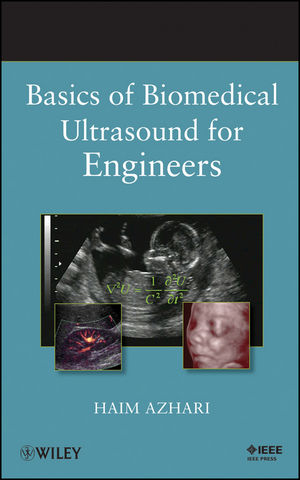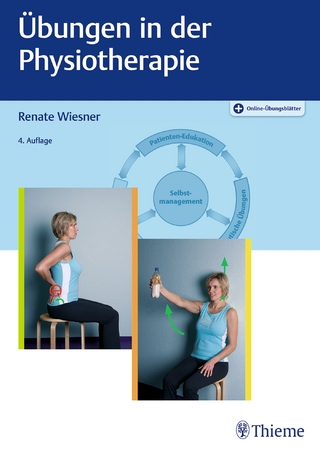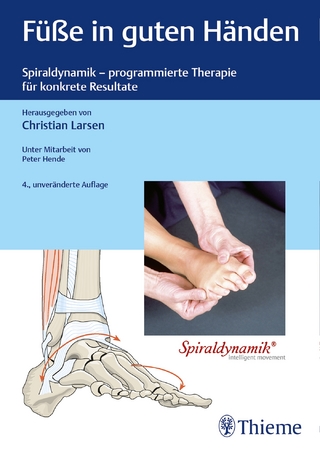
Basics of Biomedical Ultrasound for Engineers
Wiley-IEEE Press (Verlag)
978-0-470-46547-9 (ISBN)
- Titel z.Zt. nicht lieferbar
- Versandkostenfrei innerhalb Deutschlands
- Auch auf Rechnung
- Verfügbarkeit in der Filiale vor Ort prüfen
- Artikel merken
A practical learning tool for building a solid understanding of biomedical ultrasound Basics of Biomedical Ultrasound for Engineers is a structured textbook that leads the novice through the field in a clear, step-by-step manner. Based on twenty years of teaching experience, it begins with the most basic definitions of waves, proceeds to ultrasound in fluids and solids, explains the principles of wave attenuation and reflection, then introduces to the reader the principles of focusing devices, ultrasonic transducers, and acoustic fields, and then delves into integrative applications of ultrasound in conventional and advanced medical imaging techniques (including Doppler imaging) and therapeutic ultrasound. Demonstrative medical applications are interleaved within the text and exemplary questions with solutions are provided on every chapter. Readers will come away with the basic toolkit of knowledge they need to successfully use ultrasound in biomedicine and conduct research.
Encompasses a wide range of topics within biomedical ultrasound, from attenuation and eflection of waves to the intricacies of focusing devices, transducers, acoustic fields, modern medical imaging techniques, and therapeutics
Explains the most common applications of biomedical ultrasound from an engineering point of view
Provides need-to-know information in the form of physical and mathematical principles directed at concrete applications
Fills in holes in knowledge caused by ever-increasing new applications of ultrasonic imaging and therapy
Basics of Biomedical Ultrasound for Engineers is designed for undergraduate and graduate engineering students; academic/research engineers unfamiliar with ultrasound; and physicians and researchers in biomedical disciplines who need an introduction to the field. This book is meant to be “my first book on biomedical ultrasound” for anyone who is interested in the field.
HAIM AZHARI, DSc, conducts research in medical imaging, including the application of ultrasound and MRI in medical imaging, image tomographic reconstruction, image processing, and information extraction from medical images. Professor Azhari received his doctorate in biomedical engineering from the Technion–Israel Institute of Technology in 1987. From 1987 to 1990, he was on the staff of the Technion Department of Biomedical Engineering in a postdoctoral position. Azhari then received a double appointment as an International Research Fellow in both the Department of Radiology and the Division of Cardiology at the Johns Hopkins School of Medicine in Baltimore, Maryland. Upon his return to Israel in 1992, he joined the Department of Biomedical Engineering at the Technion-IIT as a staff member, where he is currently an associate professor. From 1999-2000, Azhari was at Harvard Medical School in the Beth-Israel Radiology Department.
Preface. Acknowledgments.
Introduction.
Prelude and Basic Definitions.
The Advantages of Using Ultrasound in Medicine.
A General Statement on Safety.
Some Common Applications of Ultrasound.
What Is It that We Need to Know?
References.
1 Waves—A General Description.
1.1 General Definitions of Waves—A Qualitative Description.
1.2 General Properties of Waves—A Qualitative Description.
1.3 Mechanical One-Dimensional Waves.
1.4 The Wave Function.
1.5 The Wave Equation.
1.6 Harmonic Waves.
1.7 Group Waves.
1.8 Wave Velocity.
1.9 Standing Waves (a Mathematical Description).
1.10 Spherical Waves.
1.11 Cylindrical Waves.
1.12 The Wave Equation in a Nonhomogeneous Medium.
References.
2 Waves In A One-Dimensional Medium.
2.1 The Propagation Speed of Transverse Waves in a String.
2.2 Vibration Frequencies for a Bounded String.
2.3 Wave Reflection (Echo) in a One-Dimensional Medium.
2.4 Special Cases.
2.5 Wave Energy in Strings.
2.6 Propagation of Longitudinal Waves in an Isotropic Rod or String.
2.7 A Clinical Application of Longitudinal Waves in a String.
References.
3 Ultraspmoc Waves in Fluids.
3.1 Waves in Fluids.
3.2 Compressibility.
3.3. Longitudinal Waves in Fluids.
3.4 The Wave Energy.
3.5 Intensity.
3.6 Radiation Pressure.
3.7 A Perfect Reflector.
References.
4 Propogation of Acoustic Waves in Solid Materials.
4.1 Introduction to the Mechanics of Solids.
4.2 The Elastic Strain.
4.3 Stress.
4.4 Hooke’s Law and Elastic Coefficients.
4.5 The Wave Equation for an Elastic Solid Material.
4.6 Propagation of a Harmonic Planar Wave in a Solid Material.
References.
5 Attenuation and Dispersion.
5.1 The Attenuation Phenomenon.
5.2 Explaining Attenuation with a Simple Model.
5.3 Attenuation Dependency on Frequency.
5.4 The Complex Wave Number.
5.5 Speed of Sound Dispersion.
5.6 The Nonlinear Parameter B/A.
References.
6 Reflection and Transmission.
6.1 The Acoustic Impedance.
6.2 Snell’s Law.
6.3 Reflection and Transmission from Boundaries Separating Two Fluids (or Solids with No Shear Waves).
6.4 Reflection from a Free Surface in Solids (Mode Conversion).
6.5 Reflection and Transmission from a Liquid– Solid Boundary.
References.
7 ACOUSTIC LENSES AND MIRRORS.
7.1 Optics.
7.2 Optics and Acoustics.
7.3 An Ellipsoidal Lens.
7.4 Spherical Lenses.
7.5 Zone Lenses.
7.6 Acoustic Mirrors (Focusing Reflectors).
References.
8 Transducers and Acoustic Fields.
8.1 Piezoelectric Transducers.
8.2 The Acoustic Field.
8.3 The Field of a Point Source.
8.4 The Field of a Disc Source.
8.5 The Field of Various Transducers.
8.6 Phased-Array Transducers.
8.7 Annular Phased Arrays.
References.
9 Ultrasonic Imaging Using the Pulse-Echo Technique.
9.1 Basic Definitions in Imaging.
9.2 The “A-Line”.
9.3 Scatter Model for Soft Tissues.
9.4 Time Gain Compensation.
9.5 Basic Pulse-Echo Imaging (B-Scan).
9.6 Advanced Methods for Pulse-Echo Imaging.
References.
10 Special Imaging Techniques.
10.1 Acoustic Impedance Imaging—Impediography.
10.2 Elastography.
10.3 Tissue Speckle Tracking.
10.4 Through-Transmission Imaging.
10.5 Vibro-acoustic Imaging.
10.6 Time Reversal.
10.7 Ultrasonic Computed Tomography.
10.8 Contrast Materials.
10.9 Coded Excitations.
References.
11 Doppler Imaging Techniques.
11.1 The Doppler Effect.
11.2 Velocity Estimation.
11.3 Frequency Shift Estimation.
11.4 Duplex Imaging (Combined B-Scan and Color Flow Mapping).
References.
12 Safety and Therapuetic Applications.
12.1 Effects Induced by Ultrasound and Safety.
12.2 Ultrasonic Physiotherapy.
12.3 Lithotripsy.
12.4 Hyperthermia HIFU and Ablation.
12.5 Drug Delivery.
12.6 Gene Therapy.
12.7 Cosmetic Applications.
References.
Appenidx A: Typical Acoustic Properties of Tissues.
Appendix B: Exemplary Problems.
Appendix C: Answers to Exemplary Problems.
Index.
| Reihe/Serie | Wiley - IEEE ; 1 |
|---|---|
| Sprache | englisch |
| Maße | 161 x 241 mm |
| Gewicht | 689 g |
| Themenwelt | Medizin / Pharmazie ► Physiotherapie / Ergotherapie ► Orthopädie |
| Technik ► Medizintechnik | |
| Technik ► Umwelttechnik / Biotechnologie | |
| ISBN-10 | 0-470-46547-6 / 0470465476 |
| ISBN-13 | 978-0-470-46547-9 / 9780470465479 |
| Zustand | Neuware |
| Informationen gemäß Produktsicherheitsverordnung (GPSR) | |
| Haben Sie eine Frage zum Produkt? |
aus dem Bereich


